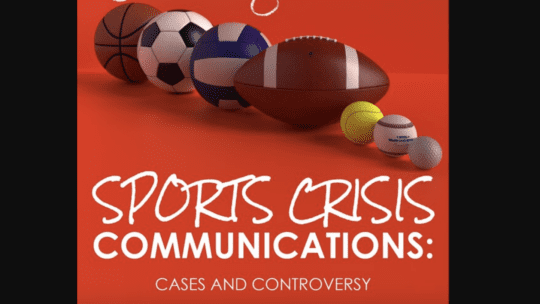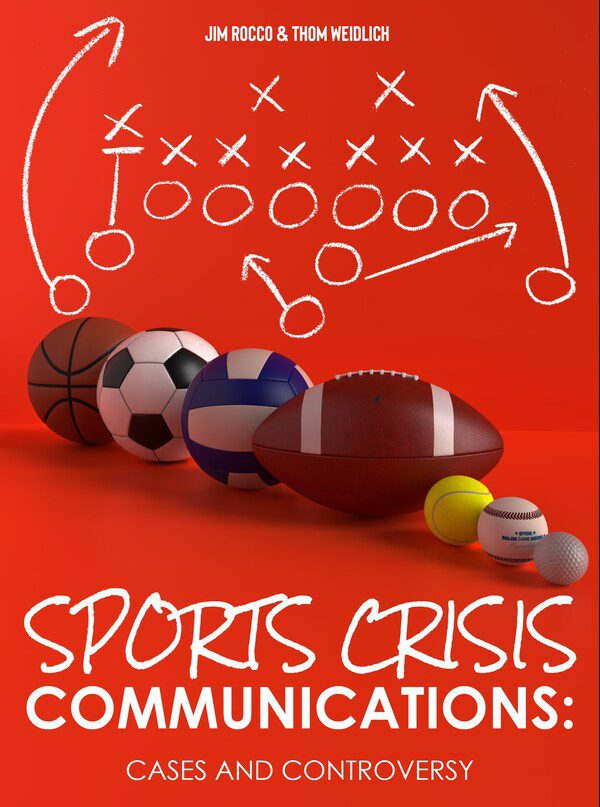
Tiger Woods. Bill Belichick. FIFA. Mike Tyson. The NFL.
What do all of these have in common? Sports, yes. But also, crisis and controversy.
There’s a lot to learn about crisis communications by looking at real-life examples in the sports industry. And it’s not just professional athletes and teams—high schools, colleges, athletic brands and sports-adjacent staffers can contribute to reputational incidents as well.

Sports crisis communications experts Jim Rocco and Thom Weidlich decided to co-author the recently-released “Sports Crisis Communications: Cases and Controversy.” For more than 20 years Rocco has worked in the sports and entertainment space, holding positions at HBO Sports and Barclays Center. After a long career in journalism at outlets such as Bloomberg, the National Law Journal and PR Week, Weidlich now specializes in crisis management, media relations and legal communications. Both now serve as managing directors at PRCG | Haggerty LLC.
The anthology provides an analysis of high-profile sports crises spanning the last decade including case studies on former NFL quarterback Tom Brady, FIFA and the NFL. It also includes interviews with broadcaster Bob Costas, Hall of Fame tennis commentator Mary Carillo and other leading sports figures.
The book tackles such topics as:
- How brands can navigate a reputational crisis involving a sponsored athlete
- How athletes can safeguard their image from scandal
- How teams can effectively communicate with fans during an emerging crisis
PRNEWS spoke with Rocco and Weidlich about the book and what communicators on all levels could learn from it.
PRNEWS: Why write this book?
Rocco and Weidlich: For more than a decade we’ve been writing blog posts on crisis communications, and then during COVID we started a podcast on sports crisis communications. We decided we needed to gather together all this great content into a book. We added introductions and updates to the sports crises we covered, wrote new chapters on what crisis communications is, along with the unique aspects within sports, and detailed how to put together crisis communications teams and plans.
PRNEWS: What can a sports crisis teach communicators about PR?
Rocco and Weidlich: We’re big believers in what we call the Credibility Bank—maintaining a reputation for integrity through positive actions and positive press coverage. In sports, this can be done at least partly through your behavior on the field (even your athletic excellence). It helps weather a crisis; people are more willing to cut you some slack. We hope readers see that this extends to other areas, such as having a reputation for integrity in business.
PRNEWS: What can PR pros take away from this book?
Rocco and Weidlich: We hope they see the importance of preparing for crises. We feel strongly that if they delve into the many examples of sports crises in the book, and listen to the commentary of the sports luminaries interviewed, they’ll develop a strong foundation for how to respond to a sports crisis. They’ll also get a grounding in crisis communications in general. And hey, many of these stories are fun to read about!
Nicole Schuman is Managing Editor at PRNEWS.
